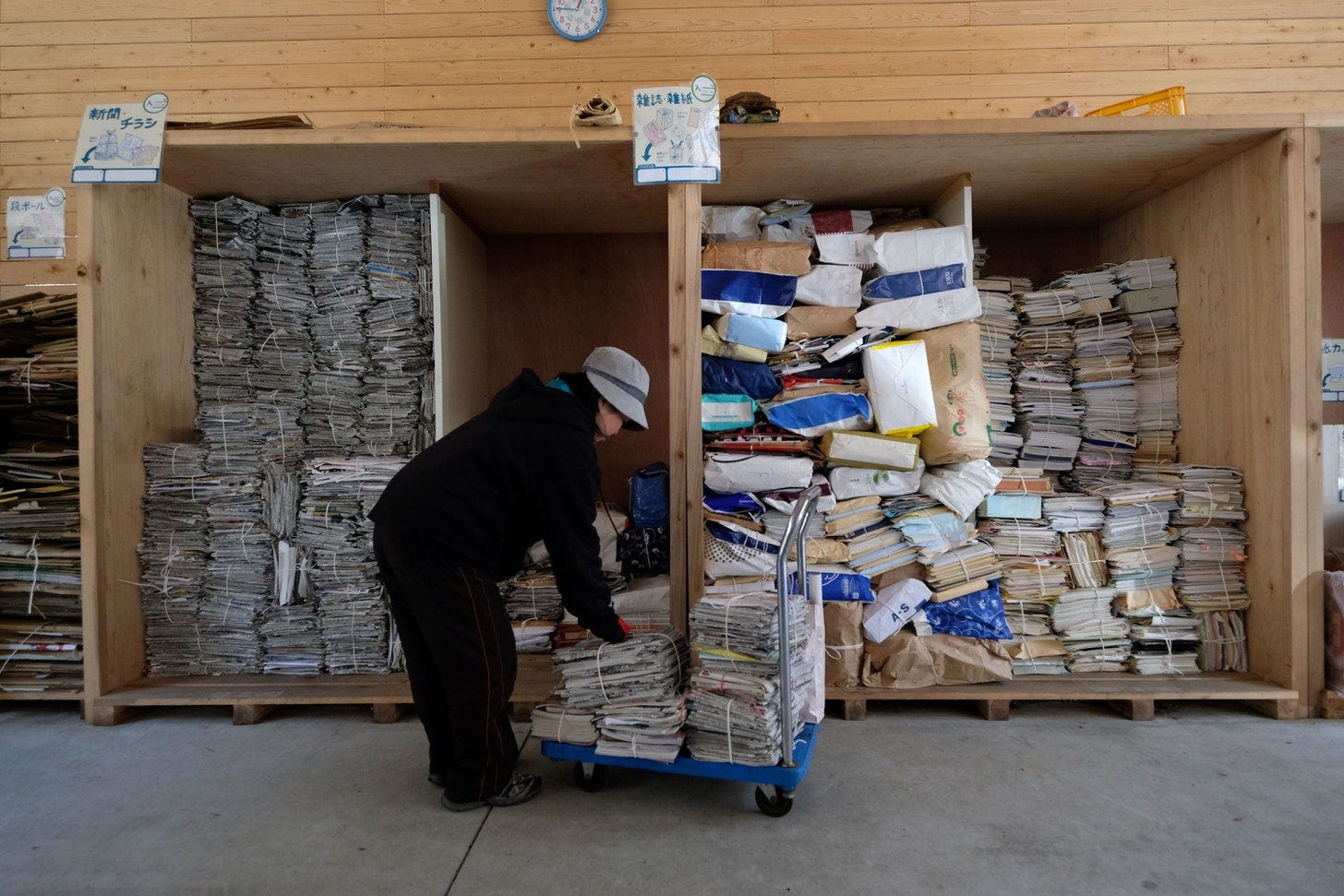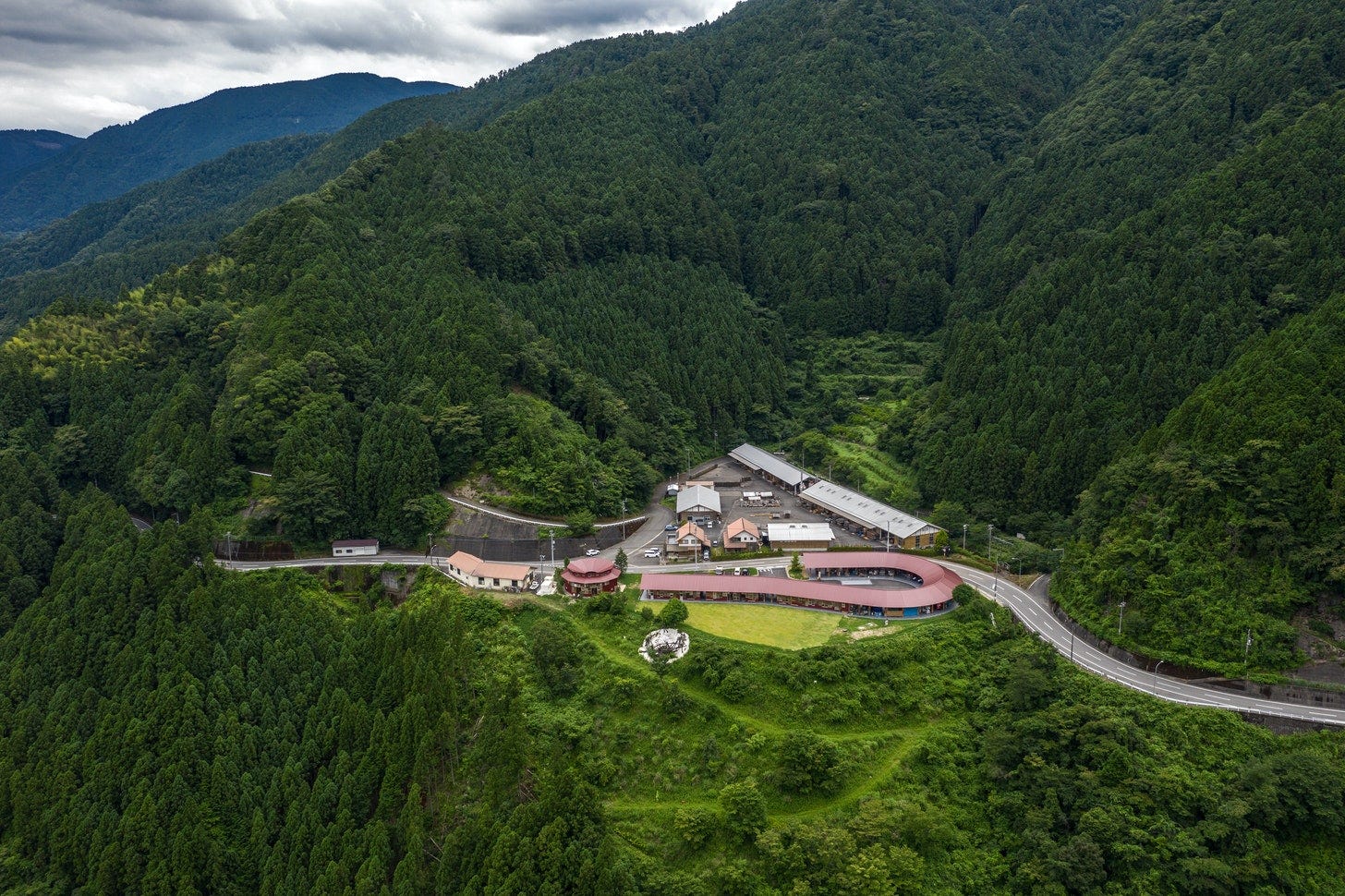What to Read: Kana Lauren Chan is sending postcards from a waste-free life in rural Japan
This week, we interviewed Kana Lauren Chan, author of Tending Gardens, about her life in Kamikatsu, Japan’s first Zero Waste Village.
This interview has been lightly edited for length and clarity.
What’s your Substack about in one sentence?
In Tending Gardens, I share a slice of life from rural Japan and what it’s like to live in Kamikatsu, Japan’s first Zero Waste Village.

Why did Kamikatsu make the transition to zero waste?
Kamikatsu is a small town, nestled deep in the mountains of Shikoku Island, with a population of fewer than 1,500 people. The town recycles over 80% of all the waste that’s disposed of, compared to the national average of 20%.
In the early ‘90s, all garbage in the town was thrown into a massive open hole in the ground and set on fire. It was a terrible way to deal with waste, both for the environment and health of the residents. Later in 1998, the incinerators that were being used stopped meeting new regulations and Kamikatsu didn’t have the money to purchase more efficient versions. Recycling and reducing garbage became the way forward for the town to save money and create a new system for waste.
What motivated you to move to Kamikatsu, a village so small it has one traffic light and the nearest konbini (convenience store) is a 25-minute drive away?
I learned about the village of Kamikatsu when I was researching sustainability initiatives in Japan. It first caught my eye for the breathtaking natural landscape. I quickly learned about their efforts to address waste and I was eager to find out more.
I serendipitously connected with another Canadian who was already living in Kamikatsu, and together we decided to create a homestay program called INOW for English speakers who were interested in learning about the village. We focus on guiding our guests to local teachers who share their knowledge of traditional skills, food, and crafts. I see our work as a bridge that connects people to people, village to city, and Japan to overseas.
How did the dramatic shift in recycling habits alter the daily lives of citizens?
What “zero waste” means for Kamikatsu is that there is no such thing as waste—everything has to get recycled. In the beginning, the transition to zero waste was difficult for many people. It was (and still is) a time-consuming effort to separate, clean, and sort all the waste into 45 different categories of recycling, but it forced people to become much more aware of what they were consuming.
Over time, what was a huge burden for residents became a way of life in Kamikatsu. The community cooperates and feels ownership and stewardship for their waste. Everyone was forced to rethink many aspects of their daily life.

You want your posts to feel like the postcard you receive from a friend. How do you evoke that feeling for readers?
It’s likely our inboxes are filled with a handful of joyless things, so I want Tending Gardens to be a small antidote, like a postcard, in a heaping stack of bills and junk mail.
I think people write postcards to share the special things they experienced with friends and family—I want to convey the same mix of enthusiasm, insight, and personal reflection. I also like that postcards are place-bound, and I want people to feel like they have learned more about Kamikatsu and what daily life is like here.
It’s likely our inboxes are filled with a handful of joyless things, so I want Tending Gardens to be a small antidote, like a postcard, in a heaping stack of bills and junk mail.
What’s been the most surprising part of your experience living in Kamikatsu so far?
There’s a strong presence of trust and kindness that was incredibly welcoming when I first moved to Kamikatsu. I think it’s different in the cities, and the experience can be much more isolating for a foreigner, but I’ve really felt like I can rely on people and call on my neighbors if I need help. There is a strong sense of community and generosity from the local people. I often get seasonal fruits, vegetables, and fish handed to me in passing.
I’m also continually surprised by the traditional knowledge that coexists with nature, which makes rural livelihood thrive and persist in the face of challenges like climate change and a declining population.
Who’s another Substack writer you’d recommend?
Yung Pueblo, Culture Study, Disability Debrief, and Climate Matters—all of which are informative, insightful, and inspirational. Receiving one of these newsletters always makes my day!
Subscribe to Tending Gardens, learn about the INOW program, and find Kana on Instagram.






Share this post